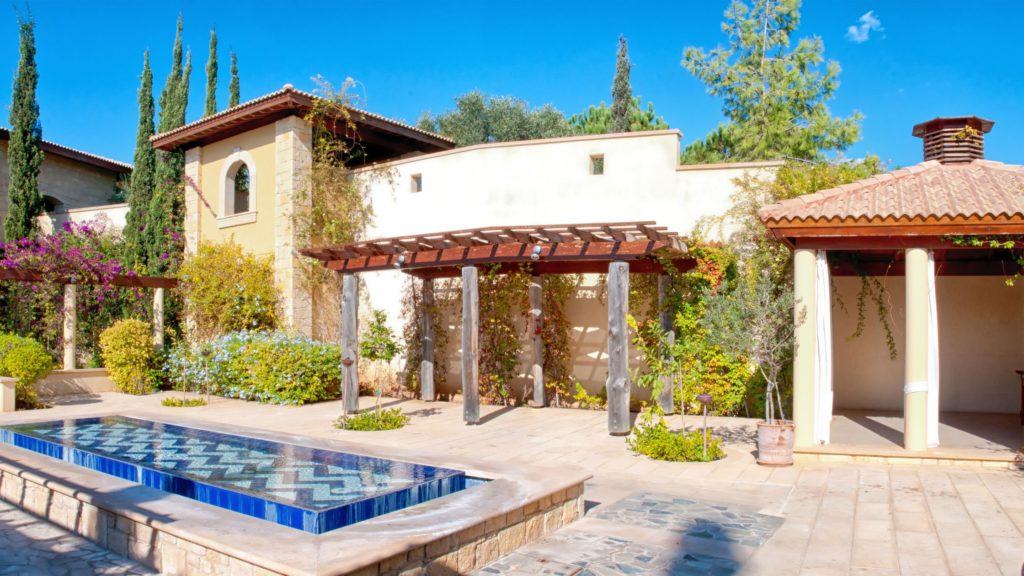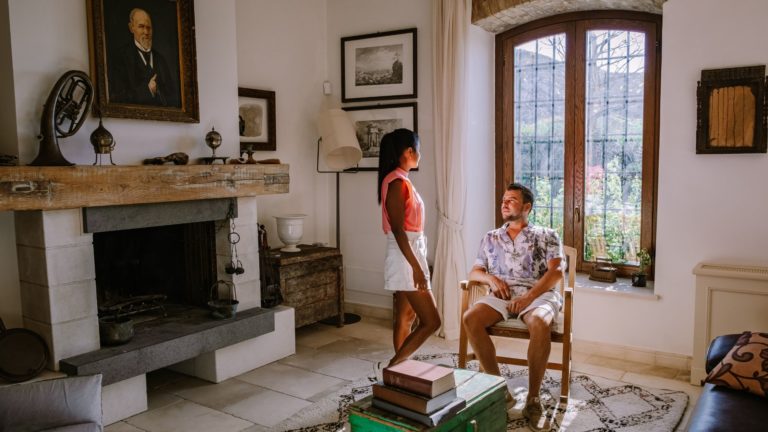The Mediterranean has always been a mosaic of culture, history, and art. From the azure waters of the sea to the golden hues of sun-baked villages, Southern Europe has gifted the world with a distinctive style that resonates through fashion, architecture, and interior design. This style isn’t just about a look, it’s a feeling – a feeling of warmth, of timeless charm, and of relaxed elegance. Let’s take a journey and explore the colors, textures, and overall ambiance of the Mediterranean style.
Colors that Sing a Symphony of the Sea and Sun
Southern Europe has a palette that would make any artist envious. Here, colors aren’t just shades; they’re emotions and stories. Think about the light ochre of Italian villas, the brilliant blue of Santorini’s domes, and the rich greens of Spanish olive groves.
- Azure Blues: The deep blues of the Mediterranean Sea and the soft pastel blues of the sky dominate many of the region’s color choices. Whether in tiles, textiles, or paints, these blues evoke feelings of tranquillity and endless summers.
- Sun-Kissed Yellows and Oranges: The Mediterranean sun is renowned for casting a golden light, and it reflects in the use of sunny yellows, soft beiges, and terracotta. These shades echo the warm glow of sunsets, the rustic walls of village homes, and the zesty burst of citrus fruits.
- Olive and Earthy Greens: The vast stretches of olive groves and vineyards provide shades of deep green, which when paired with earthy browns, create a grounded and organic feel.
Textures that Tell Tales of Time
While colors play a pivotal role, the Mediterranean style is incomplete without its characteristic textures.
- Rough Stonework and Plaster: Walls with imperfect finishes, slightly worn-out façades, and rustic stone claddings aren’t flaws but design features. They give homes and spaces a sense of history and authenticity.
- Ceramic Tiles: Often hand-painted and in myriad designs, tiles are quintessential to the Mediterranean. From the vibrant mosaics of Morocco to the azulejos of Portugal, these tiles grace floors, walls, fountains, and tabletops.
- Woven Textures: Rattan, wicker, and jute find their way into furnishings, be it chairs, baskets, or rugs. These natural materials provide an organic touch and bring a bit of nature indoors.

Elements that Echo a Laid-back Elegance
Mediterranean style has an effortless elegance that’s rooted in simplicity and functionality.
- Archways and Columns: Borrowed from Greco-Roman architecture, graceful arches and stout columns are iconic. They not only provide structural support but also add a classic touch to buildings and homes.
- Courtyards and Open Terraces: Outdoor living is a hallmark of the Mediterranean lifestyle. Open terraces adorned with terracotta pots, bubbling fountains, and iron-wrought furniture invite one to bask in the sun or dine under the stars.
- Wrought Iron Details: Be it railings, grilles, or light fixtures, intricate ironwork is both decorative and functional. Often finished in dark tones, they provide a beautiful contrast to the lighter shades of the surroundings.
A Fusion of Tradition and Modernity
While the Mediterranean style has ancient roots, it’s far from being stuck in the past. Contemporary designs often infuse traditional elements with modern aesthetics. Clean lines might merge with rustic textures, or a minimalist space might boast a statement mosaic centerpiece. It’s this amalgamation that keeps the style evergreen, allowing it to evolve while paying homage to its origins.
The Symphony of Mediterranean Sounds
Besides its rich visual landscape, the Mediterranean style is deeply influenced by the ambient sounds of Southern Europe. These auditory experiences play a subconscious role in immersing oneself into the feel and ambiance of the region.
- Chirping Cicadas & Gushing Waters: Spend an evening in a coastal town or village, and the sounds of cicadas combined with the soft waves create a serene, almost hypnotic soundtrack. These gentle rhythms often inspire the fluidity and pace of Mediterranean life.
- Musical Notes & Local Festivities: The strumming of a Spanish guitar, the lilting notes of a Greek bouzouki, or the beats of tambourines during local festivals all contribute to the ambiance. These sounds not only influence the region’s festive spirit but also inspire patterns, motifs, and designs that feature in decor and architecture.
The Scents that Transport You
The olfactory experience of the Mediterranean is as distinctive as its colors and textures. Scents play a crucial role in evoking memories, emotions, and a sense of place.
- Lavender & Rosemary Fields: The fragrant stretches of lavender in Provence or the aromatic rosemary bushes dotting the Italian countryside influence not just the gardens, but also inspire home fragrances, candles, and even culinary choices in the region.
- Sea Salt & Citrus Groves: The refreshing scent of sea salt in coastal towns, combined with the tangy aroma of lemon and orange groves, plays a huge role in the overall sensory experience of the Mediterranean. These scents, often bottled in perfumes or infused in soaps, bring the Mediterranean touch into daily life.
Incorporating these sounds and scents into spaces, be it through water features, music, fragrances, or plants, helps in capturing the full essence of the Mediterranean, making the experience holistic and immersive.
In Conclusion
The Mediterranean style is more than just a design ethos; it’s a reflection of a lifestyle that values simplicity, beauty, and harmony with nature. From the sprawling countryside of Tuscany to the coastal towns of the Amalfi Coast and the charming lanes of Andalusia, every nook and corner of Southern Europe contributes to this iconic style. By incorporating its colors, textures, and elements, one doesn’t just design a space; they bring in a slice of the Mediterranean soul.


